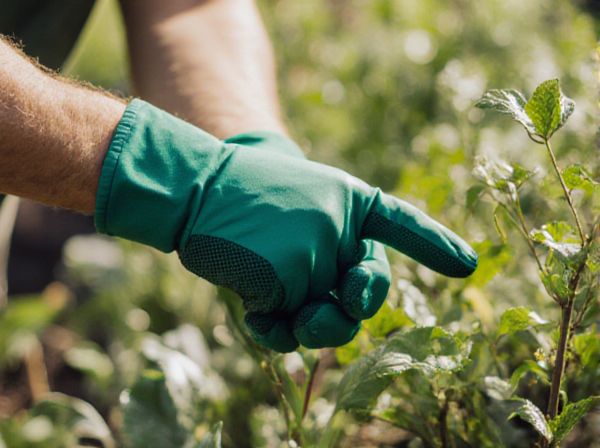
Rainfed gardening vs Irrigated gardening Illustration
Rainfed gardening relies solely on natural rainfall, making it more sustainable and cost-effective but vulnerable to drought and irregular weather patterns. Irrigated gardening provides a consistent water supply through artificial means, enhancing crop reliability and yield, especially in arid regions. Balancing these methods can optimize water use efficiency and support resilient agricultural practices amid climate variability.
Table of Comparison
| Aspect | Rainfed Gardening | Irrigated Gardening |
|---|---|---|
| Water Source | Natural rainfall | Controlled irrigation (pipes, sprinklers) |
| Water Availability | Inconsistent, seasonal | Consistent, on-demand |
| Climate Dependence | High sensitivity to weather fluctuations | Less sensitive due to water management |
| Yield Stability | Variable, risk of drought impact | Stable, optimized growth conditions |
| Soil Moisture Control | Limited control | Precise regulation possible |
| Water Use Efficiency | Dependent on rainfall patterns | Improved via targeted irrigation |
| Environmental Impact | Minimal, uses natural water cycles | Potential overuse risks, runoff concerns |
| Cost | Low initial investment | Higher setup and maintenance costs |
| Best Suited For | Regions with reliable rainfall | Arid and semi-arid regions |
Understanding Rainfed and Irrigated Gardening
Rainfed gardening relies solely on natural rainfall for crop growth, making it highly dependent on local climate patterns and seasonal variability. Irrigated gardening supplements water through artificial means such as drip systems or sprinklers, allowing for controlled moisture levels and extended growing seasons. Understanding the water availability, soil type, and regional rainfall distribution is crucial for optimizing plant health and yield in these distinct gardening methods.
Key Differences in Water Sources
Rainfed gardening relies solely on natural rainfall as its water source, making it highly dependent on local climate patterns and seasonal precipitation. In contrast, irrigated gardening uses controlled water applications from external sources such as wells, rivers, or harvested rainwater, allowing for more consistent and reliable moisture supply. This fundamental difference impacts crop selection, growth cycles, and water management strategies in each gardening method.
Soil Health Impacts of Rainfed vs. Irrigated Systems
Rainfed gardening promotes natural soil structure by maintaining organic matter and supporting microbial diversity through periodic moisture cycles. Irrigated gardening often risks soil salinization and compaction, which can degrade soil health if water management is not optimized. Sustainable irrigation practices combined with rainfed methods enhance soil fertility and water retention capacity, crucial for resilient crop production under variable climate conditions.
Crop Selection for Rainfed and Irrigated Gardens
Rainfed gardening favors drought-tolerant crops such as millet, sorghum, and pigeon pea that thrive with natural rainfall patterns, reducing water dependency. Irrigated gardening supports a wider range of crops including tomatoes, cucumbers, and lettuce, enabling year-round cultivation and higher yields due to controlled water supply. Selecting crops based on water availability optimizes productivity and resource efficiency in both rainfed and irrigated garden systems.
Climate Adaptability and Resilience
Rainfed gardening relies on natural precipitation, making it highly dependent on regional climate patterns and vulnerable to drought variability, whereas irrigated gardening allows for controlled water application, enhancing crop resilience in arid and unpredictable climates. Crop selection and soil management in rainfed systems must prioritize drought-tolerant and climate-resilient species, while irrigated gardens can support a wider range of crops due to reliable water supply. Efficient water management technologies in irrigated gardening improve adaptability by mitigating climate risks like irregular rainfall and extreme heat events.
Water Efficiency and Conservation Strategies
Rainfed gardening relies on natural precipitation, making it highly water-efficient by reducing the need for supplemental irrigation and conserving local water resources. In contrast, irrigated gardening allows precise control over water application, optimizing plant health but requiring robust conservation strategies such as drip irrigation and soil moisture monitoring to prevent water wastage. Employing rainwater harvesting and mulching in both methods enhances water retention and supports sustainable water management in diverse climate conditions.
Pest and Disease Management Differences
Rainfed gardening relies on natural rainfall, often resulting in less predictable moisture levels that can influence pest populations and disease outbreaks, typically favoring pests adapted to drier conditions. Irrigated gardening provides consistent water supply, creating a humid microclimate that may increase the risk of fungal diseases and attract moisture-loving pests like aphids and whiteflies. Effective pest and disease management in rainfed systems often emphasizes drought-resistant plant varieties and natural pest control, whereas irrigated systems benefit from integrated approaches including moisture regulation and targeted chemical or biological treatments.
Environmental Impacts and Ecosystem Services
Rainfed gardening relies on natural precipitation, reducing water extraction from local sources and promoting groundwater recharge, thus minimizing environmental strain and maintaining ecosystem balance. Irrigated gardening can lead to water overuse, soil salinization, and habitat disruption, negatively impacting biodiversity and reducing ecosystem services such as pollination and carbon sequestration. Sustainable rainfed practices support soil health and native vegetation, enhancing resilience to climate change while irrigated methods require careful management to mitigate environmental degradation.
Cost and Labor Considerations
Rainfed gardening typically incurs lower initial costs as it relies on natural precipitation, reducing expenditures on irrigation infrastructure and water bills. Labor requirements often vary, with rainfed systems needing more frequent monitoring to manage inconsistent water availability, whereas irrigated gardening demands ongoing maintenance of irrigation equipment and water management. Evaluating these factors is crucial for optimizing resource allocation and ensuring sustainable crop production under varying climate conditions.
Long-term Sustainability in Changing Climates
Rainfed gardening relies on natural precipitation, promoting water conservation and reducing energy use, which enhances long-term sustainability in regions facing variable rainfall patterns due to climate change. Irrigated gardening ensures consistent water supply for crops, but depends heavily on water resources that may become scarce or stressed with increasing drought frequency. Integrating adaptive water management strategies and drought-resistant plant varieties can improve the resilience of both rainfed and irrigated systems for sustainable agriculture in changing climates.
Rainfed gardening vs Irrigated gardening Infographic

 gardendif.com
gardendif.com